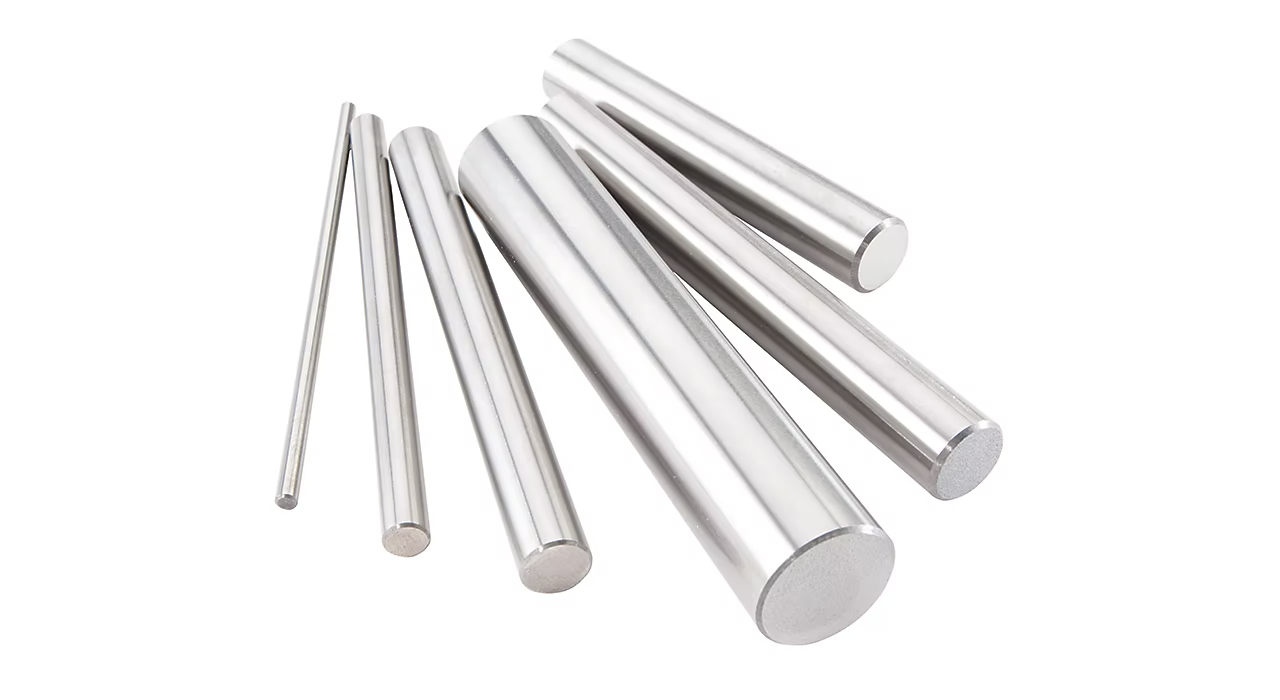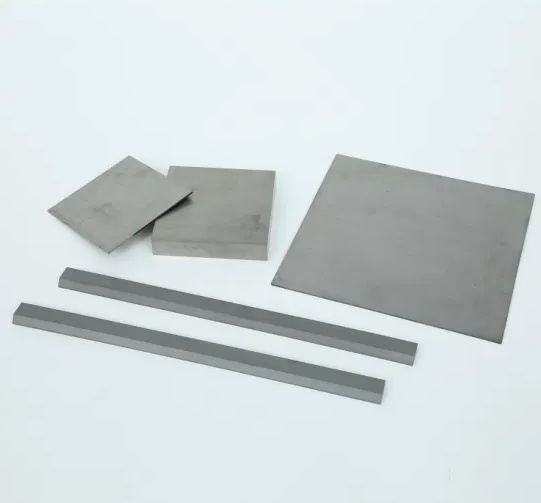はじめに優れた機械加工の基礎
機械加工の世界では、1秒1秒、1ミクロンが重要です。しかし 超硬インサート ブランクは、その硬度と耐摩耗性で有名ですが、その潜在能力を真に引き出すのは、高度なコーティングの適用です。TRUERは、卓越した工具の基礎は、これらの重要な表面処理の性能を最大限に引き出すように設計された最高級の超硬合金から始まると理解しています。当社の超硬インサートブランクが卓越した性能と工具寿命を発揮できるよう、最高品質のコーティングのみを調達しています。
超硬インサートブランクコーティング:微細な層、大きな衝撃
原子レベルでパフォーマンスを変える
超硬チップブランクコーティングは、超硬基材の表面に非常に硬く、耐摩耗性の高い材料を超薄層で蒸着します。多くの場合、厚さ数ミクロンのこのコーティングは、目に見えないシールドの役割を果たし、加工中に発生する強い熱、摩擦、機械的ストレスから下地の超硬合金を保護します。
コーティングの種類ソリューションのスペクトル
表1:一般的な超硬インサート・ブランク・コーティング材料とその特性
| コーティング・タイプ | 略語 | 主要物件 | 代表的なアプリケーション |
|---|---|---|---|
| 窒化チタン | チタン | 高硬度、良好な耐摩耗性、黄金色 | 鋼鉄、鋳鉄、ステンレス鋼加工用の汎用コーティング |
| 炭窒化チタン | TiCN | TiNと比較して硬度と耐摩耗性が向上、灰黒色 | 研磨材加工、高速切削 |
| 窒化チタン・アルミニウム | TiAlN | 高温硬度が高く、耐酸化性に優れ、独特のバイオレット・グレー色。 | 難削材の高速加工、ドライ加工アプリケーション |
| 酸化アルミニウム | Al2O3</a | 高い化学的不活性、高温での優れた耐摩耗性、一般的に白色または透明 | 耐熱合金の高速加工、ドライ加工 |
| ダイヤモンドライクカーボン | DLC | 極めて低い摩擦係数、高い硬度、化学的に不活性 | 非鉄材料の加工、高速アプリケーション、要求の厳しい仕上げ加工 |
コーティングの塗布方法強固な接着の確保
蒸着から先端プロセスへ
このような薄く、しかし驚異的な耐久性を持つコーティングを作るには、特殊な技術が必要だ:
- 化学気相成長法(CVD): 広く使われている方法で、加熱した超硬基材に化学反応によってコーティング材を気化させて蒸着させる。CVDコーティングは、優れた密着性と均一な膜厚で知られている。
- 物理蒸着(PVD): 真空チャンバー内で基材にコーティング材を物理的に蒸着させる。PVDコーティングは純度が高く、CVDよりも低温でコーティングできるため、超硬基材の特性が変化するリスクを最小限に抑えることができる。
- 高度なコーティング技術: CVDやPVDだけでなく、ハイパワーインパルスマグネトロンスパッタリング(HiPIMS)やパルスレーザー蒸着(PLD)のような革新的なコーティング技術は、コーティングの特性と性能を向上させます。
性能を最大限に引き出すトップ超硬インサートブランク TRUERブランク用コーティング
- 硬さで知られる窒化チタン(TiN)コーティングは、トルアー超硬と非常によく結合します。トルアー超硬固有の靭性は、硬い窒化チタン層があってもチッピングに強く、鋼や鋳鉄の一般的な加工に理想的です。この組み合わせは、ほとんどの加工現場で汎用性の高い選択肢となり、ブランクの信頼性の高い性能を保証します。
- 炭窒化チタン(TiCN)コーティングは、さらに高い硬度と耐摩耗性を提供します。TRUERカーバイドの微細な粒構造はTiCNの特性を補完し、優れた耐摩耗性をもたらします。さらに、TRUERカーバイドの高温安定性はコーティングの有効寿命を延ばし、研磨材を高速で加工する場合に特に適しています。靭性と耐摩耗性が最も重要な場合、この組み合わせは優れています。
TRUERのアドバンテージ:私たちは、最高のコーティングであっても、その土台は強固なものでなければならないことを理解しています。だからこそ 超硬インサートブランク は、最適化された超微粒子構造と厳密に管理された純度レベルを特徴とし、厳格な基準に従って設計されています。この組み合わせにより、上記のコーティングの優れた密着性と性能が保証され、機械加工の生産性を最大化し、部品当たりのコストを低減します。
超硬インサートブランクサプライヤーの比較:グローバル市場
表2 超硬インサートブランクサプライヤーの比較
| サプライヤー | 所在地 | 価格帯(インサート1枚あたり、米ドル、概算) | 特産品 |
|---|---|---|---|
| ケナメタル | アメリカ | $5 – $50+ | 幅広い炭化物グレードと形状 |
| サンドビック・コロマント | スウェーデン | $6 – $60+ | 高性能で持続可能な超硬ソリューションに注力 |
| イスカー | イスラエル | $4 – $45+ | 複雑な形状と特殊な超硬工具の専門知識 |
| セコ・ツールズ | スウェーデン | $5.5 – $55+ | Duratomic®超硬テクノロジーとデジタル加工ソリューションで知られる |
| ウォルター | ドイツ | $5 – $50+ | Tiger-tec®超硬テクノロジーと精密工具の専門知識を提供 |
| TRUER | 中国 | $4 – $40+ | 独自の表面処理により、コーティングの性能と工具寿命を最大限に引き出します。 |
注: 価格は大きく変動し、チップサイズ、形状、超硬グレード、数量、その他の要因によって異なります。
利点と限界:トレードオフを天秤にかける
表2 超硬インサートブランクコーティングの利点と限界
| メリット | 制限事項 |
|---|---|
| 工具寿命の向上: コーティングされていないチップと比較して工具寿命を大幅に延長し、工具コストとダウンタイムを削減 | コーティングの接着性: 塗膜の適切な接着は性能にとって極めて重要であり、接着不良は塗膜の早期破壊につながる。 |
| 切断性能の向上: 高い切削速度と送りを可能にし、生産性を向上 | コーティングの厚さ: コーティングはインサート寸法をわずかに増加させる可能性があり、公差の厳しいアプリケーションに影響を与える可能性がある。 |
| 表面仕上げの向上: 切り屑の流れを促進し、エッジの盛り上がりを抑え、表面品質の向上につながる | コストだ: コーティングされたインサートは、通常、コーティングされていないインサートよりも初期コストが高い。 |
| 汎用性の向上: さまざまなコーティングは、特定の材料や加工工程に最適化されています。 | 用途に応じた選択: 適切なコーティングを選択することは非常に重要です。不適切なコーティングは、性能低下や早期故障につながる可能性があります。 |
表面を超えて:超硬インサートブランクスのコーティング性能に影響を与える要因
- コーティングの厚さと均一性: 最適な性能と工具寿命のためには、均一な厚さのコーティングが不可欠です。
- 基板の材質と準備: コーティング前の表面処理と同様に、超硬基材の特性もコーティングの密着性と性能に大きく影響する。
- 加工パラメータ: 適切な切削速度、送り、切込み深さを選択することは、コーティングされたチップの利点を最大限に引き出し、コーティングの早期破損を防ぐために非常に重要です。
- 冷却と潤滑: 適切な冷却と潤滑戦略により、コーティングされた超硬チップの性能と寿命はさらに向上します。
超硬インサートブランクのよくある質問
1.加工用途に適したコーティングを選ぶには?
最適なコーティングの選択は、加工材料、加工作業(旋盤加工、フライス加工、ドリル加工など)、切削速度と送り、要求される表面仕上げ、予算など、いくつかの要因によって異なります。コーティングのサプライヤーや工具の専門家に相談することを強くお勧めします。
2.どんな超硬合金でもコーティングできますか?
必ずしもそうではない。コーティング材と超硬基材の相性は、良好な密着性と性能を発揮するために非常に重要です。コーティングのサプライヤーや工具の専門家は、適合する組み合わせについて指導することができます。
3.超硬インサートコーティングの一般的な厚さは?
コーティングの厚さは、コーティング材料や用途によって異なるが、通常2~12ミクロン(μm)である。
4.コーティングされたインサートの交換時期を知るには?
コーティングの摩耗、チッピング、剥離の目視検査は不可欠である。さらに、切削力、仕上げ面の劣化、切りくずの形成の変化を監視することで、工具交換の必要性を示すことができる。
5.磨耗したり損傷したコーティングの修理や再コーティングは可能ですか?
損傷の程度によっては、コーティングを剥がして再施工できる場合もある。しかし、この作業には費用がかかり、必ずしも実行できるとは限りません。再コーティングの可能性を判断するために、コーティングの専門家に相談することをお勧めします。



